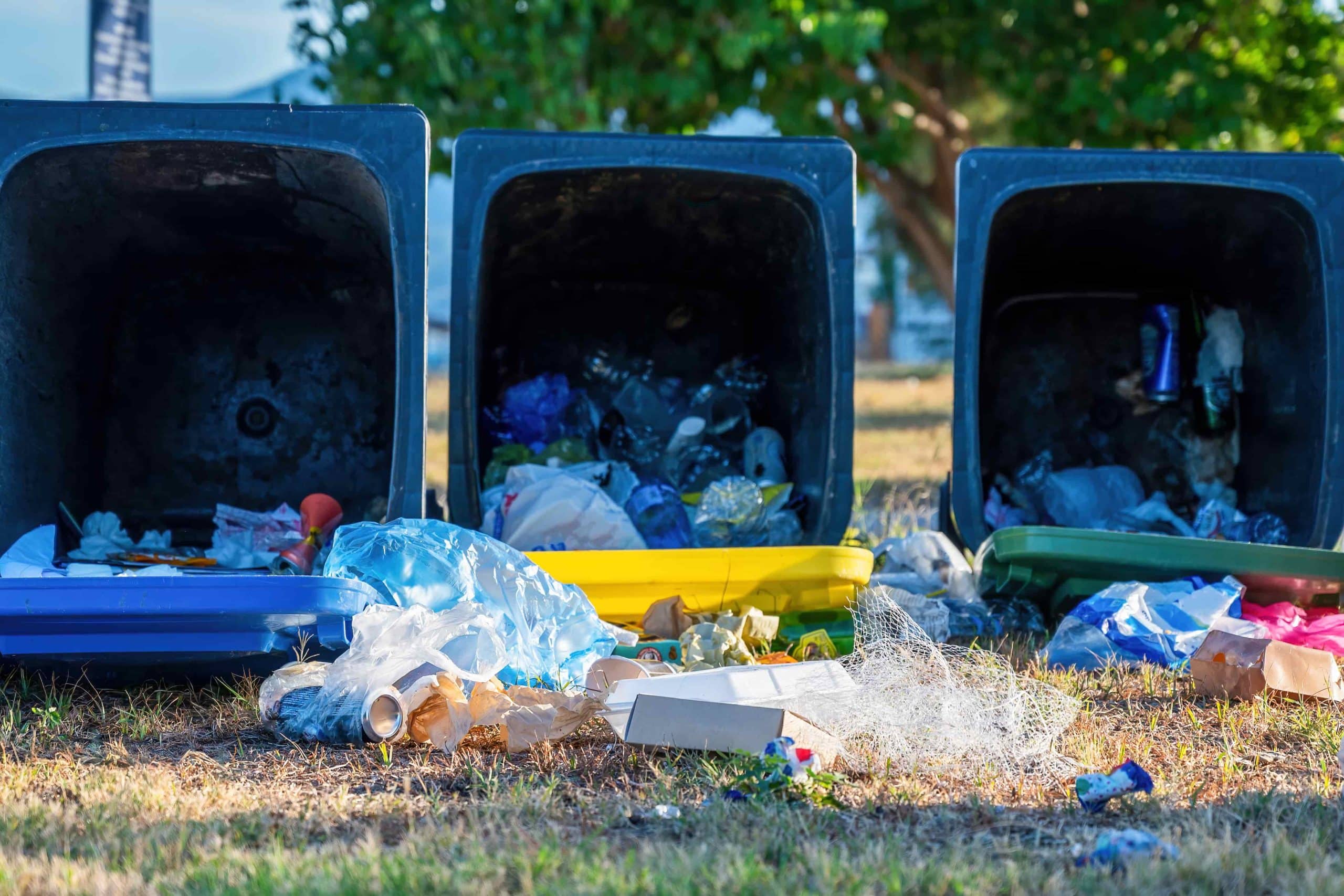Regarding safeguarding your home or business from termites, knowledge is power.
Understanding the key areas that exterminators meticulously inspect can help you stay proactive in preventing costly termite-related repairs in the future.
From foundation to attic, these thorough examinations leave no corner unexamined as experts seek out signs of termite activity and potential vulnerabilities that could leave your property susceptible to an infestation.
So, let’s take a closer look at the seven crucial elements that exterminators focus on during termite inspections – because vigilance is paramount for termites.
Table of contents
7 Things Exterminators Check During Termite Inspections
Here are 7 Things Exterminators Check During Termite inspections:
1. Mud tubes
Mud tubes are protective tunnels built by termites to travel between their nest and food sources. These tubes are made of a mixture of soil, saliva, and termite droppings, and they help to protect the termites from predators and the elements.
Exterminators check for mud tubes during termite inspections because they are sure to indicate termite activity. Mud tubes can be found on the exterior of buildings, near foundations, and around pipes and utility wires. If an exterminator finds mud tubes, it indicates a termite infestation in the building.
Here are some tips on how to identify mud tubes:
- Mud tubes are typically light brown or gray.
- They are about the size of a pencil.
- They are usually found in areas that are damp or moist.
Read Also: How to Get Rid of Permanent Marker Stains
2. Swarmer Damage
Swarmer damage is a sign of termite activity often seen during termite inspections. Swarmers are reproductive termites that leave the colony to mate and start new colonies. They are typically seen in the spring when they take advantage of warm weather to fly away from their nests.
Swarmers have discarded wings that they lose after they mate. These wings are often seen on window sills, doors, and other areas where swarmers may have entered a home. Exterminators will check for these discarded wings as a sign of termite activity.
In addition to discarded wings, exterminators will also check for other signs of swarmer damage, such as:
- Swarmer carcasses: Swarmers do not always survive after mate, and their corpses can sometimes be found near the nest.
- Swarmer frass: Swarmer frass is the droppings of swarmers. It is a fine, sand-like material found near the nest.
If an exterminator finds signs of swarmer damage, it indicates a termite infestation in the building. Swarmer damage is often seen in the early stages of an infestation, so you must contact an exterminator immediately if you notice any of these signs.
Here are some tips on how to prevent swarmer damage:
- Seal up any cracks or openings in your home’s exterior. Swarmers can enter your home through cracks in your foundation, siding or around pipes and utility wires. Sealing up these openings will help to prevent swarmers from getting inside.
- Trim back any trees or shrubs that are close to your home. Swarmers can use these trees and shrubs to reach your home. Trimming them back will make it more difficult for them to get inside.
- Replace any damaged wood. Damaged wood is a favorite food source for termites. Replacing any damaged wood will help prevent termites from infesting your home.
Read Also: How To Kill Fungus Gnats Faster
3. Wood Damage
Wood damage is a common sign of termite infestation. Termites are social insects that live in colonies and feed on wood. They eat the cellulose, the main component of wood, from the inside out. This can cause extensive damage to your home’s structural components, including framing, flooring, and furniture.
There are a few different types of wood damage that exterminators look for during termite inspections:
- Hollowed-out wood: Termites eat the cellulose from the inside out, leaving behind hollowed-out wood. This can be a sign of severe termite infestation.
- Pencil-sized holes in wood: Termites often create holes to enter and exit their tunnels. These holes are a sure sign of termite activity.
- Frass: Frass is termite droppings that look like sawdust. Frass can be found in areas where termites are active, such as near baseboards, pipes, and crawl spaces.
If you find any signs of wood damage in your home, it is essential to contact an exterminator immediately. Early detection and treatment of termite infestations can save you from costly repairs.
Here are some tips on how to prevent wood damage from termites:
- Eliminate moisture: Termites are attracted to water, so it is essential to eliminate moisture sources around your home. This includes fixing leaky pipes, repairing gutters, and ventilating crawl spaces.
- Keep wood away from the ground: Termites can easily travel from the floor to your home through wood in contact with the environment. To prevent this, ensure at least 6 inches of clearance between the wood and the ground.
- Store firewood properly: Termites love eating firewood, so storing it away from home is essential. Ideally, firewood should be stored at least 20 feet away from your home and off the ground.
Read Also: How Do Stud Finders Work?
4. Moisture Damage
Moisture damage indicates potential termite activity because termites are attracted to moist environments. They use moisture to regulate their body temperature and humidity levels and often build their nests in damp areas.
Exterminators check for moisture damage during termite inspections because it can indicate that conditions are favorable for termites. Some common signs of moisture damage that exterminators look for include:
- Water stains on walls or ceilings
- Peeling paint or wallpaper
- Damp crawl spaces or basements
- Leaking pipes or plumbing fixtures
- Condensation on pipes or windows
If an exterminator finds signs of moisture damage, they will recommend ways to reduce the moisture levels in your home. This may involve repairing leaking pipes, improving ventilation, or installing a dehumidifier.
Here are some tips on how to prevent moisture damage in your home:
- Fix any leaks promptly.
- Improve ventilation in your crawl space and basement.
- Install a dehumidifier in your basement or crawl space.
- Keep firewood stored away from your home.
- Trim bushes and trees away from your home.
5. Previous termite infestations
When evaluating a property for potential termite infestation, exterminators meticulously examine for signs of past termite activity. This is crucial because even if there are no signs of current termite activity, remnants from a previous infestation indicate that the property is at an increased risk of future termite problems.
Signs of Past Termite Infestation:
- Old Mud Tubes: Termites construct mud tubes to connect their nest to food sources, protecting the environment and predators. While active termite infestations often display fresh mud tubes, older, hardened mud tubes can persist for an extended period. Exterminators will carefully inspect for these hardened mud tubes, particularly around foundations, crawl spaces, and areas with moisture accumulation.
- Swarmer Damage: Swarmers are the reproductive termites that emerge from the colony to establish new colonies. During their emergence, they may shed their wings, leaving telltale signs of swarmer damage on window sills, door frames, and other areas where they may have attempted to enter the structure. Exterminators will check for these discarded wings, often resembling tiny scales, as evidence of past swarmer activity.
- Repaired Wood Damage: Termites consume wood from the inside out, leaving behind characteristic damage. While fresh wood damage is a clear indication of an active infestation, exterminators also look for signs of repaired wood damage, such as patched areas, replaced wood components, or areas where wood fillers or sealants have been applied. These repaired areas suggest termite damage has occurred in the past, even if the visible damage has been addressed.
Read ALSO: Getting Latex Paint out of Clothes – How to Get Paint Out of Clothes
6. Signs of other pests
Sure, here is an explanation of signs of other pests as one of the things exterminators check during termite inspections:
When inspecting a property for termite infestation, exterminators will not only look for signs of termites but also check for signs of other pests that can cause damage to wood. Some common pests that exterminators will look for include:
- Carpenter ants: Carpenter ants are giant, black ants that can hollow out wood to create their nests. They are often found in moist areas of the home, such as the crawl space or basement.
- Powderpost beetles: Powderpost beetles are small, brown beetles that lay their eggs in wood. When the eggs hatch, the larvae eat the wood, creating small holes and sawdust-like frass.
- Subterranean termites: The most common type in the United States is subterranean termites. They live in colonies underground and build mud tubes to travel between their nest and food sources.
Exterminators will look for a variety of signs to identify these pests, including:
- Frass: Frass is the sawdust-like droppings of wood-boring pests. It can be found near the holes the pests have created in the wood.
- Damaged wood: Wood damaged by pests may have small holes, tunnels, or cracks. It may also be soft and spongy.
- Live pests: Exterminators like ants or beetles will also look for live pests. They may also use traps to catch problems that are not visible.
If the exterminator finds signs of other pests, they will recommend treatment options to eliminate the infestation. Treatment options may include baiting, liquid soil treatments, or fumigation.
Read ALSO: 10 Amazing Uses for Baking Soda and Vinegar
7. The overall condition of your home
Sure, here is an explanation of the overall condition of your home as one of the things exterminators check during termite inspections:
Termite inspectors will assess the overall condition of your home to identify any factors that could attract or harbor termites. This comprehensive evaluation involves inspecting the property’s interior and exterior, paying close attention to areas that provide moisture and potential entry points.
Areas of Focus During Inspection:
- Foundation and Crawl Space: The foundation and crawl space are prime targets for termites due to their often damp and secluded nature. Inspectors will check for cracks, gaps, or areas of wood-to-soil contact that could allow termites to enter the home.
- Exterior Walls and Siding: Inspectors will examine the exterior walls and siding for any damage, cracks, or gaps that could provide termites with an entry point. They will also check for signs of termite activity, such as mud tubes or frass (termite droppings).
- Doors and Windows: Doors and windows are common termite entry points, so inspectors will carefully check for gaps or spaces around these openings. They may also check for damaged weatherstripping or caulking that could provide termites with access.
- Moisture-Prone Areas: Termites thrive in moist environments, so inspectors will pay close attention to areas prone to moisture accumulation, such as bathrooms, kitchens, laundry rooms, and basements. They will check for leaks, condensation, and poor ventilation that could attract termites.
- Wood Storage and Debris: Piles of wood, lumber, or other cellulose-based materials around the home can attract termites and provide them with a food source. Inspectors will check for such materials and recommend their removal or proper storage.
- Landscaping and Vegetation: Overgrown vegetation, mulch, or piles of leaves too close to the foundation can provide termites with a bridge to the home. Inspectors will assess the landscaping and recommend any necessary changes to create a more termite-resistant environment.
Read Also: 12 Amazing Uses for Vinegar and a Usage Guide
How Long Does a Termite Inspection Take?
A termite inspection typically takes between 30 minutes and two hours, depending on the size and complexity of the property. The inspector will need to examine both the interior and exterior of the home, and they may also need to inspect the crawl space or attic.
The following factors can affect the length of a termite inspection:
- Size of the property: A larger home will naturally take longer to inspect than a smaller home.
- The complexity of the property: A home with many crawl spaces, nooks, or crannies will take longer to inspect than a home with a simple layout.
- The severity of the infestation: If the inspector suspects a severe infestation, they may need to spend more time thoroughly examining the property.
- Experience of the inspector: A more experienced inspector will be able to inspect a home more quickly than a less experienced inspector.
Here is a general breakdown of how long you can expect a termite inspection to take:
- Small home (less than 1,000 square feet): 30-45 minutes
- Medium home (1,000-2,500 square feet): 45-60 minutes
- Large home (over 2,500 square feet): 60-90 minutes
- Home with complex features (crawl space, attic, multiple levels): 90 minutes
FAQs
Termite inspectors look for evidence of termite activity, such as mud tubes, damaged wood, and droppings.
Exterminators use specialized tools and knowledge to assess termite activity and damage within a property.
Yes, termites can cause significant structural damage by feeding on wood and weakening the integrity of a building’s framework.
Homeowners should be vigilant for hollow-sounding wood, discarded wings, and small holes in drywall as potential indicators of a termite infestation
Conclusion
Termite inspections are crucial in protecting properties from the devastating effects of these destructive pests. To ensure early detection and effective treatment, professional exterminators diligently check for signs of termite activity, including mud tubes, damaged wood, and swarmers.
Additionally, they assess moisture levels, entry points, and conducive conditions that may attract termites to the property. By thoroughly inspecting and identifying potential risk factors, exterminators can provide tailored recommendations and preventative measures to safeguard homes and businesses from termite infestations.





